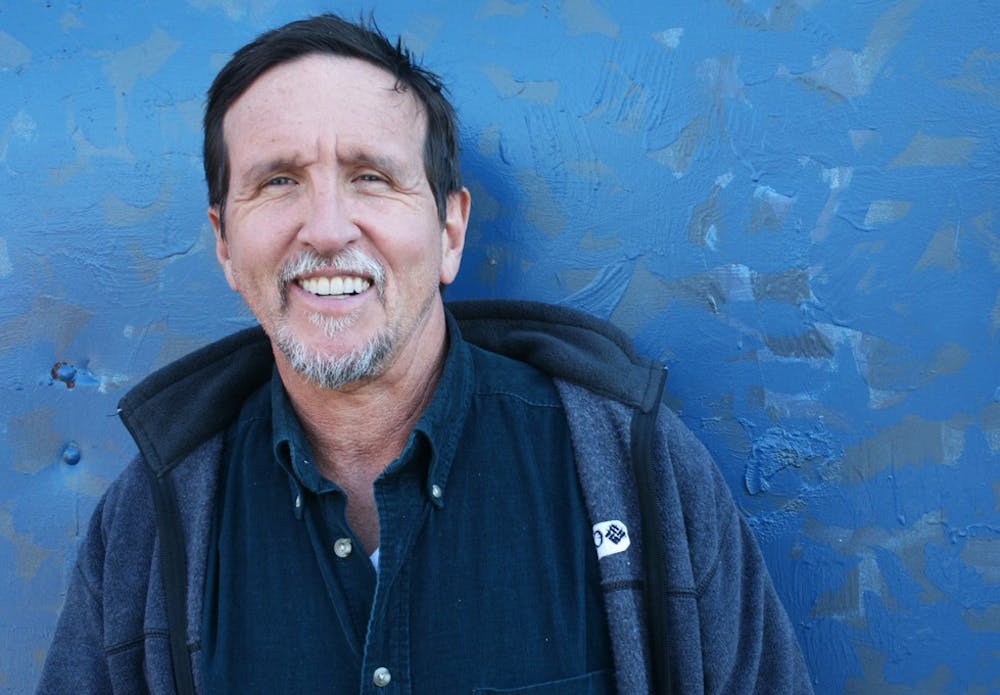Michael Brown is a self-proclaimed “North Carolina boy.” A 1977 graduate of UNC, Brown is the creator of many of the town’s beloved murals, including the sea turtles on Columbia Street and the marching parade in Porthole Alley.
Brown is now being featured at the Eno Gallery in Hillsborough. Daily Tar Heel staff writer Walker Minot talked with Brown about painting and his career.
Daily Tar Heel: How do you approach mural painting?
Michael Brown: Occasionally I will get an idea from a building and approach someone, but most of the time somebody — a building owner, citizens groups or a business — will approach me, that’s the first step.
Then, politically, you figure out what the funder and building owner would like to see, something that doesn’t violate any town regulations. Once all that’s figured out, I try to make it at least moderately artistic and interesting and entertaining.
You’d think that would come first, and I hope it does on one level, but there’s a fairly big process of getting different people to come on board. Then I photograph and measure the building, draw up drawings that fit. Then I grid off the building, usually using mortar joints and brick sizes as a basis for my grid.
I do a few background colors first, filling in the drawing’s grid. Then I draw it. A half an inch on the drawing becomes a half a foot on the building. That’s really it, you do your drawing and fill in the colors. It sounds a lot like paint by numbers, and in a way it is, but if you didn’t have any artistic training at all, you probably couldn’t make it look very good.
DTH: Do you feel constrained as an artist about what you can do with a mural?
MB: I feel constrained as an artist about what I can do in the art galleries and everywhere else. I’ve been lucky to have more freedom and somewhat more imagination about what would be cool and fun than a lot of mural artists. I don’t mind that because I like art, and I like sharing art with the public, and I’m sort of a populist, it’s an important part of my politics and personality. I like for the average person who may not go into the museum that often to still get a charge out of seeing something be a painting and of it being art. If I were one of those people who had been born with a trust fund or other privileges, I know my work in many ways would be a lot different, way different.



